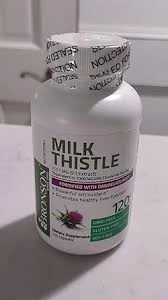
Avg . 14, 2024 11:06 Back to list
Understanding Salmonella and Its Impact on Food Safety and Public Health Concerns Today
Understanding Salmonella What It Is and How Manufacturers Address It
Salmonella is a type of bacteria that can cause foodborne illness, leading to a condition known as salmonellosis. It is one of the most common causes of gastrointestinal infections in humans and is primarily acquired through the consumption of contaminated food or water. Understanding salmonella's impacts and the measures manufacturers take to prevent its spread is crucial for consumer safety and public health.
What is Salmonella?
Salmonella comprises a group of bacteria, more than 2,500 serotypes, known for causing illness. This pathogen frequently resides in the intestines of various animals, especially birds, reptiles, and mammals. The bacteria can contaminate a wide array of foods, including raw meat, poultry, eggs, and even dairy products. Fruits and vegetables can also become infected through contaminated soil or water.
When an individual ingests food contaminated with salmonella, the bacteria can lead to symptoms such as diarrhea, fever, abdominal cramps, and vomiting. The onset of symptoms typically occurs six hours to six days after infection, and while many recover within a week without requiring antibiotics, severe cases, especially in vulnerable populations such as the elderly or immunocompromised individuals, can lead to hospitalization.
The Role of Manufacturers in Combatting Salmonella
Food manufacturers play a pivotal role in preventing salmonella contamination. To safeguard consumer health, they implement stringent safety protocols throughout the food production process, from sourcing raw ingredients to processing, packaging, and distribution.
que es salmonella manufacturer

1. Quality Control and Supplier Management Manufacturers often engage in rigorous supplier assessments to ensure that the ingredients sourced are from reputable farms or producers that adhere to strict hygiene standards. Regular audits and certifications help maintain high quality and safety levels in the supply chain.
2. Hygiene Practices The hygiene of manufacturing facilities is paramount. Cleanliness is enforced through regular sanitation of equipment, surfaces, and environments where food is processed. Employees are trained in personal hygiene practices, including proper handwashing protocols, to minimize the risk of contamination.
3. Heat Treatment and Processing Many manufacturing processes involve heat treatment, which is effective in killing harmful bacteria, including salmonella. For instance, the cooking of poultry and eggs at appropriate temperatures can eliminate the risk of infection. Manufacturers use pasteurization for dairy products and other applicable foods to ensure safety.
4. Testing and Monitoring Regular microbiological testing of food products and environmental samples within manufacturing facilities helps detect the presence of salmonella before products reach consumers. Immediate actions are taken if contamination is found, including recalls and thorough investigations to identify the source.
5. Consumer Education Many manufacturers participate in consumer education campaigns, offering guidance on proper food handling and preparation techniques. This includes information on cooking temperatures, cross-contamination prevention, and safe food storage practices to empower consumers in reducing their risk of salmonella exposure.
Conclusion
The fight against salmonella involves a collaborative effort between manufacturers, regulatory bodies, and consumers. By understanding what salmonella is and the proactive steps that manufacturers take to mitigate its risks, consumers can make informed decisions about their food choices. Continued vigilance, research, and adherence to food safety regulations are vital in reducing the incidence of salmonellosis and ensuring that the food supply remains safe for everyone. By fostering an environment of safety and responsibility, we can work towards eliminating the threat of salmonella within our food systems.
-
Quality Bacillus Coagulans BC30 Factory - Expert Production
NewsAug.02,2025
-
China Salivation AI with GPT-4 Turbo Features
NewsAug.01,2025
-
Epic Sepsis Factories: AI-Driven Detection with GPT-4 Turbo
NewsJul.31,2025
-
Acute Salpingitis and Oophoritis AI Factory
NewsJul.31,2025
-
Premium China Bacillus Subtilis Supplier & Factory Solutions
NewsJul.30,2025
-
Premium Avermectin Supplier in China | Custom Solutions Available
NewsJul.29,2025




